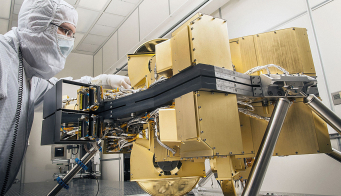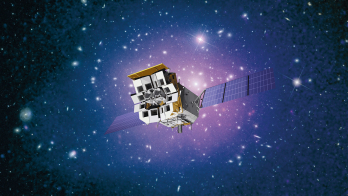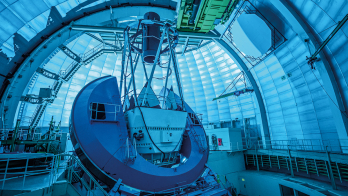An international team of astronomers using the Parkes radio telescope in Australia has detected very short radio flashes from 11 sources distributed in the plane of our galaxy. The isolated flashes last typically no more than 10 ms and are separated by relatively long periods of quiescence of several minutes. The detection of periodicities in the signal suggests that these new sources are rotating neutron stars, but of a different class to pulsars and magnetars.

The 11 sources were detected in data recorded between January 1998 and February 2002 as part of a pulsar survey by the 64 m Parkes radio telescope in New South Wales, operated by the Commonwealth Scientific and Industrial Research Organisation (CSIRO). This survey found more than 800 pulsars and is the most successful in history. Rather than searching only for the periodic trains of pulses, the astronomers, led by a team from the University of Manchester’s Jodrell Bank Observatory in the UK, developed new techniques for detecting single short bursts of radiation.
After confirmation of their celestial origin, all sources have been re-observed several times since August 2003 and they all showed repeated bursts, from four to more than 200 bursts in total for each source. The pulses last for 2-30 ms and occur with an average rate of one every 4 minutes to one every 3 hours. For all but one source it was possible to identify periodicities in the arrival times of the bursts. The period range from 0.4 to 7 s suggests that the new sources are likely to be rotating neutron stars. Half of the sources have periods exceeding 4 s, which is very unusual for radio pulsars, but is similar to the periods measured for magnetars: neutron stars with a very strong magnetic field, which can produce recurrent flashes of soft gamma-rays (see CERN Courier June 2005 p12).
The relatively high periodicities and the transient nature of the pulses suggest that these neutron stars are of a new class, which the team has named rotating radio transients, (RRATs). These sources seem to need several hundred of rotations to gather enough energy for a flash. The properties of RRATs resemble those of magnetars, so it is possible that they are neutron stars evolving to or from magnetars.
The new objects appear to be distributed preferentially along the galactic plane and they might even be several times more numerous than radio pulsars. This estimate is based on their ephemeral nature, which makes them shine in total for only about 0.1 s each day. This also explains why these sources, which are among the brightest radio sources when flaring, remained unnoticed until now, and it opens a new field of investigation for the emerging generation of wide-field radio telescopes.
Further reading
M A McLaughlin et al. 2006 Nature 439 817.







